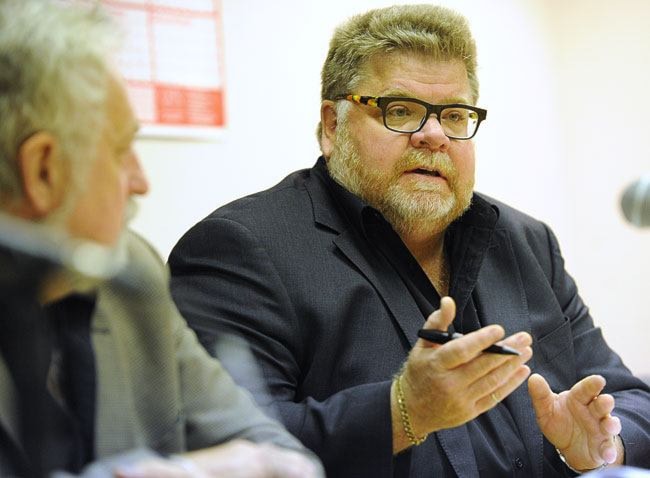The Yukon schools in the territory’s highest earthquake danger zone are the most likely to survive a major quake - ironically - because they’re the oldest.
Eight Yukon schools have been identified as being at medium to high risk if they were to be hit with a major earthquake. The highest-risk area is in the southwest, including the communities of Destruction Bay, Beaver Creek and Haines Junction. Whitehorse Elementary, Takhini, Christ the King, Wood Street and Selkirk are all pegged at moderate risk.
But as earthquake-engineering specialist Andy Mill explained on Tuesday, those schools are actually the most likely to survive a major quake.
“Fortunately those buildings have the best construction possible for an earthquake, and that’s wood frame. Wood frame does very well, especially of that vintage which are mostly punch windows in plywood shear walls. They do very well,” Mill said.
At a technical briefing on Tuesday morning, Mill explained that older, wooden structures can more easily withstand the shock of a major earthquake because they are flexible and won’t crumble the way some old concrete buildings will.
The Yukon government is currently drafting a plan to address the eight at-risk schools, and they’ve recruited Mill to help figure it out.
Mill has a lot of experience retrofitting schools for earthquake safety, especially in B.C. where the earthquake danger is higher, as are the number of schools affected.
“There are 214 high-risk schools in B.C., just as an example, and I’ve been involved with that since the very beginning. Some of the challenges they’ve faced there are mirrored here,” Mill said.
But things are not quite as bad up here as they are down south.
When measuring earthquake size, engineers use a yardstick called peak ground acceleration, which is measured in G-forces.
In the Yukon, an “extreme” seismic event would involved a peak ground acceleration of anywhere between 11 per cent and 33 per cent. In B.C. however, an “extreme” even could reach as high as 60 per cent acceleration.
In order to combat the moving earth, Mill explained that sometimes simple solutions work best.
“Fundamentally we’re resisting lateral movements. What does that are walls. In a wood frame building, we may have enough walls, but they may not be connected together. So it may be as simple as load path ... taking existing elements that actually work and tying them together,” Mill said.
In the mean time, the schools will undergo non-structural mitigation to help protect students in the event of a major shake up.
“There’s lots of research that shows a high percentage of injuries happen in an earthquake from things falling. When you think of the bookcases that you haven’t tied back to your walls at home, those are the sorts of things we need to do,” said Public Works deputy minister Mike Johnson.
Johnson referred to the ceiling at the Canada Games Centre as an example of the kinds of tie-backs and other protections that can be put in place to bring buildings up to safety standards.
The short-term mitigations include having more earthquake drills at Yukon schools, as well as bolting bookshelves and lockers to the walls, securing overhead pipes and lights, tying down school equipment and covering some windows with protective film.
The short-term safety measures should be completed by this summer. Because some of the schools are so old, they may be at the end of their useful lives anyway, making it smarter to simply rebuild them, Johnson said. But figuring out which schools to rebuild and which to retrofit will take some time. The schools will undergo a life-cycle assessment that should be completed by the end of June 2015.
The seismic evaluation that identified the eight at-risk buildings was completed in September, and recommended almost $20 million in upgrades for all eight schools combined.
While the idea of schools falling down on children is certainly terrifying, Mill explained that the actual risks involved are almost infinitesimal.
“The earthquake we’re designing for is a 2,500 (year cycle) return quake. It’s an extremely large event, and the probability of it occurring tomorrow is astronomically low,” Mill said.
Contact Jesse Winter at
jessew@yukon-news.com
